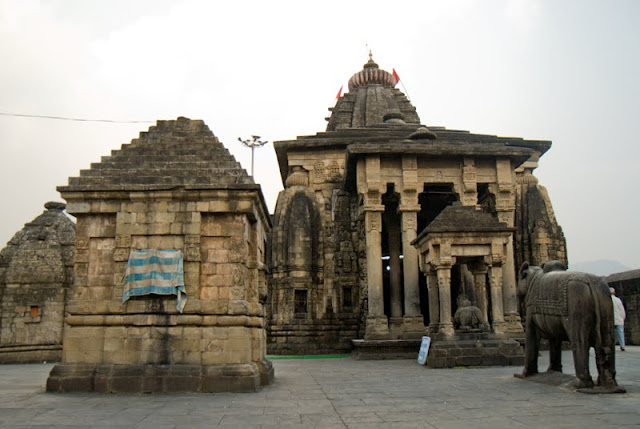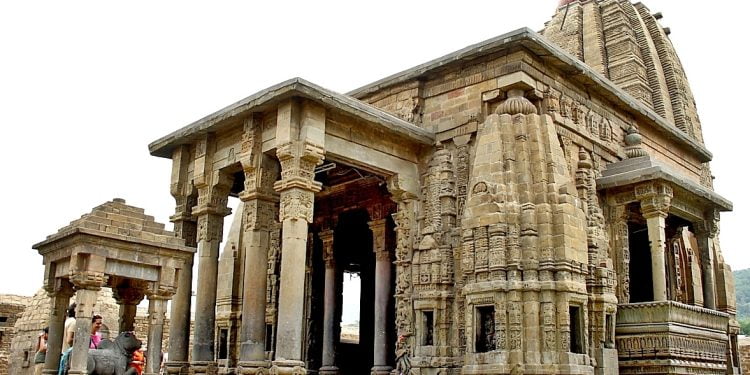Baijnath Temple is a revered shrine of Himachal Pradesh. Located at a distance of 16 km from Palampur in the Beas valley, Baijnath Temple is dedicated to Lord Shiva
Shrine’s History
The history of the ancient Baijnath Temple is hazy and the two long inscriptions fixed in the walls of the mandapa of the temple gives us an account of the temple. The temple was built in Saka 1126 by two brothers Manyuka and Ahuka in devolution to Lord Vaidyanatha. The inscriptions tell us that a Sivalinga was known as Vaidyanatha already existed on the spot but was without a proper house so the present temple and a porch in its front were constructed. British Archaeologist Alexander Cunningham noticed an inscription of 1786 in the temple referring to its renovations by king Sansara Chandra. An inscription on the wooden doors of the sanctum of the temple provides the date as samvat 1840 that is very near to Cunninghams date.
The devastating earthquake that shook the entire region of Kangra on 4 th April 1905 also caused damage to the shrine, which has been reported by J. Ph. Vogel and has since been repaired. At present, the temple is a protected monument under the Archaeological Survey of India but the performance of worship and rituals are under a local board at Baijnath with SDM as its chairman. The hereditary priests continue to get a share of the offerings.

Architectural Relevance of This Shrine
The present temple is a beautiful example of the early medieval north Indian temple architecture known as Nagara style of temples. The Svayambhu form of Sivalinga is enshrined in the sanctum of the temple that has five projections on each side and is surmounted with a tall curvilinear Shikhara. The entrance to sanctum is through a vestibule that has a large square Mandapa in front with two massive balconies one each in north and south. There is a small porch in front of the mandapa hall that rests on four pillars in the front preceded by an idol of Nandi, the bull, in a small pillared shrine. The whole temple is enclosed by a high wall with entrances in the south and north.
The outer walls of the temple have several niches with images of gods and goddesses. Numerous images are also fixed or carved in the walls. The outer doorway in the porch as also the inner doorway leading to the sanctum of the temple are also studded with a large number of images of great beauty and iconographic importance. Some of them are very rare to be found elsewhere.

Shrine’s Map Location and How to Go There
By Road
The Baijnath Temple is very well connected by all weather roads to Delhi via Chandigarh and to Manali via Mandi.The temple is even easily accessible via road from Dharamsala, Palampur, Kangra and all the major cities of Himachal Pradesh.
By Rail
The nearest rail station of Kalka 90 km.
By Air
The closest airport is at Kullu, positioned 23 km from here.
Events Celebrated at This Shrine
Dussehra festival,Maha Shivratri
Extra Information About this Shrine
The temple attracts a large number of tourists and pilgrims from all over India and abroad throughout the year. Special prayers are offered in the morning and evening every day besides on special occasions and during festive seasons. Makara Sankranti, Maha Shivaratri, Vaisakha Sankranti, Shravana Mondays, etc. are celebrated with great zeal and splendour. A five-day state level function is held here on Maha Shivratri every year.













































